Greece › Athens › Archaeological Sites › Hadrian’s Library
By Santorini Dave
See Also
- Best Hotels in Athens
- Where to Stay in Athens
- Best Restaurants in Athens
- Best Things to Do in Athens
- Complete Athens Travel Guide
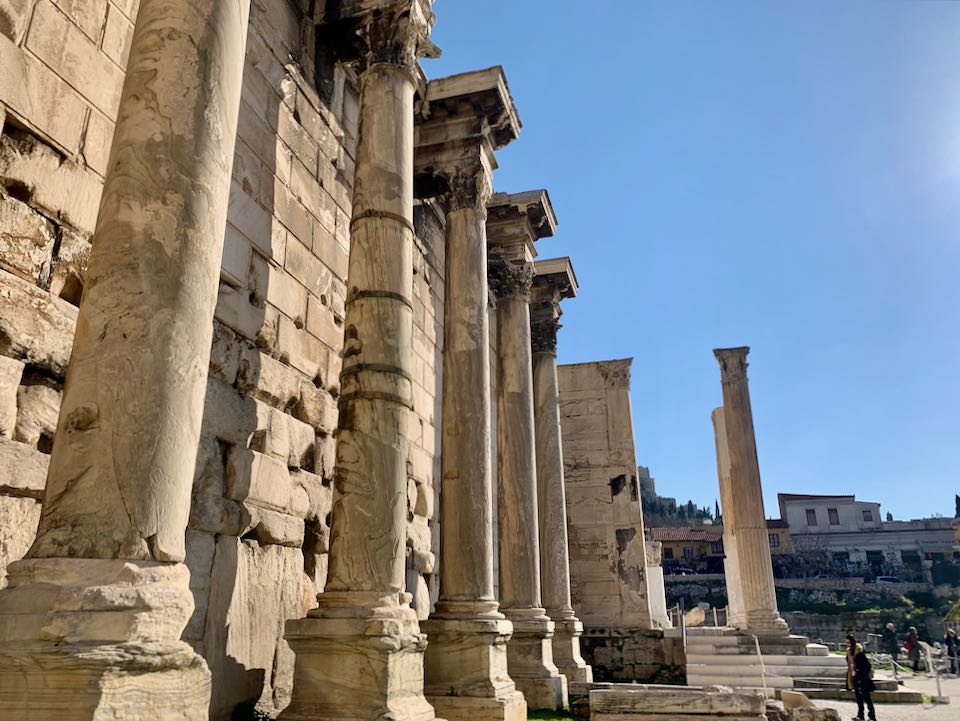
The impressive entrance to the archaeological site of Hadrian’s Library in Athens.
Tours and Tickets:
• Athens Pass Combo Ticket (7 archaeological sites + Acropolis Museum. No tour.)Hadrian’s Library Hours and Information
- Hours: Open daily. Summer 8am – 8pm; last entrance to the site at 7:40pm. Hours are reduced gradually in the fall through winter (check website for details). Closed 1 January, 25 March, 1 May, Orthodox Easter Sunday, 25 & 26 December.
- Website: odysseus.culture.gr
- Location: Κ, Areos 3
- Telephone: +30 210 324 9350
- Admission Fee: Summer (April to October) entrance fee: 6€. Winter (November to March) entrance fee: 3€. Reduced admission 3€. You can also purchase a 30€ combo ticket for this and 6 additional sites: Acropolis, Ancient Agora of Athens, Roman Agora, Temple of Olympian Zeus, Kerameikos, and Aristotle’s Lyceum. The combo ticket is valid for 5 days and offered year round. Purchase on site or in advance online.
- Free Entry: 6 March (in memory of Melina Mercouri), 18 April (International Monuments Day), 18 May (International Museums Day), the last weekend of September annually (European Heritage Days), 28 October, every first Sunday from November 1st to March 31st.
- Parking: Street parking, nearby pay lots.
- Nearest Metro: Monastiraki.
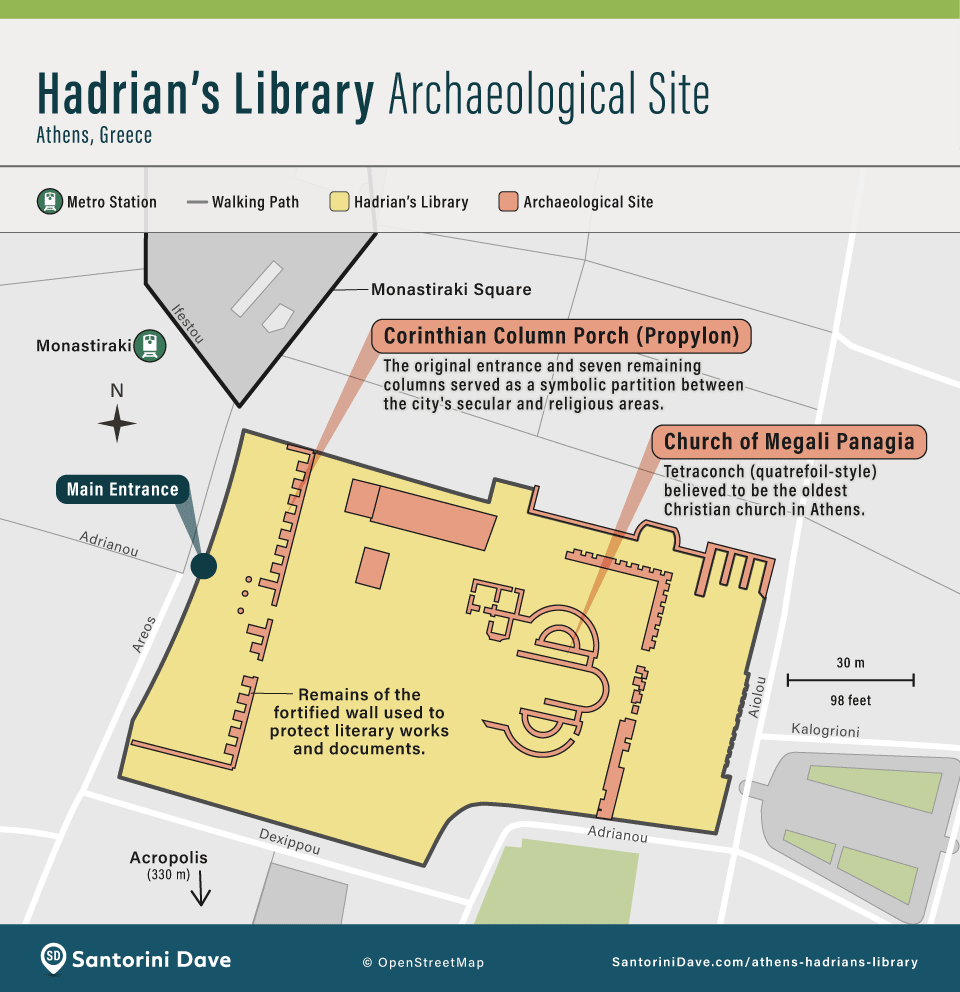
Hadrian’s Library in Athens
- Hadrian’s Library is an ancient archeological site in the Monastiraki area, to the north of the Acropolis. The closet metro station is Monastiraki, about 50 meters away and directly across from the site.
- It was built in 132 AD by the Roman emperor Hadrian, who ruled from 117 to 138 AD. This is probably the largest building he erected during his reign. The ancient building included a library, as well as music and lecture auditoriums. It basically served as a civic center during Roman times, conveniently located near the nearby Roman Agora (market).
- The library’s west wall, located by the entrance, has been restored. Beyond that, there are only a few remnants of the original library, its columns and the entrance framed by 7 remaining Corinthian columns, remnants of foundations and walls of a pavilion, and 2 early churches – including what is believed to be the oldest Christian church in Athens.
- Hadrian was regarded as a “good” emperor and a just ruler. Although he was devoted to his army and commonly depicted in military uniform, his reign was relatively peaceful. Hadrian reigned for 21 years; 12 of those were spent traveling throughout the Empire, visiting provinces and overseeing all aspects of government and justice.
- Decent translation, but it wouldn’t hurt to read up on this site before visiting so it makes more sense.
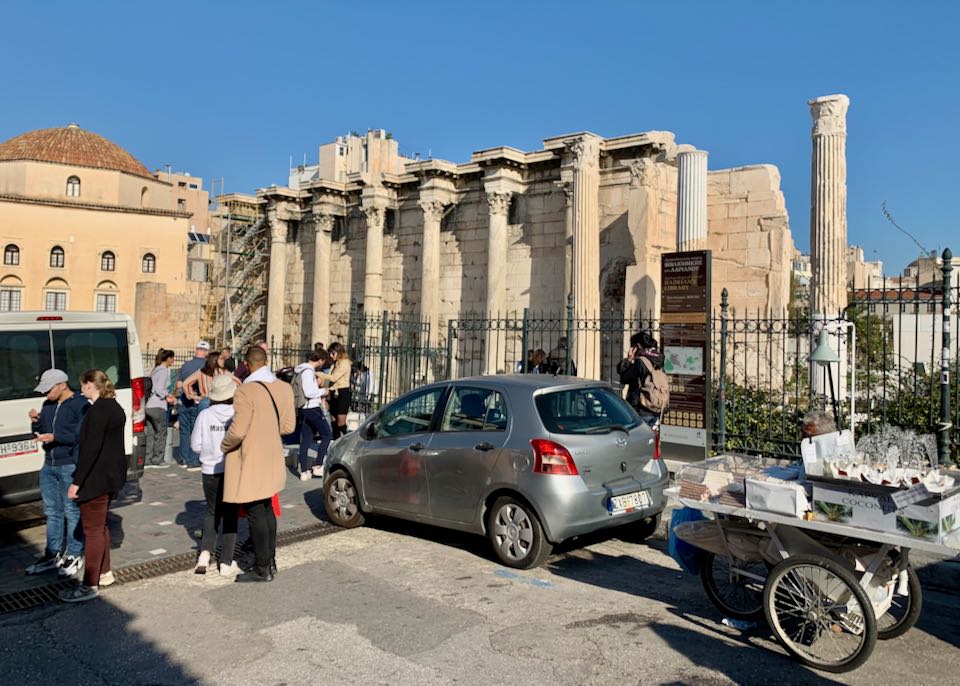
The entrance to the archaeological site of Hadrian’s Library in Athens is located along the compact but busy Areos Street, very near Monastiraki Square and metro station.
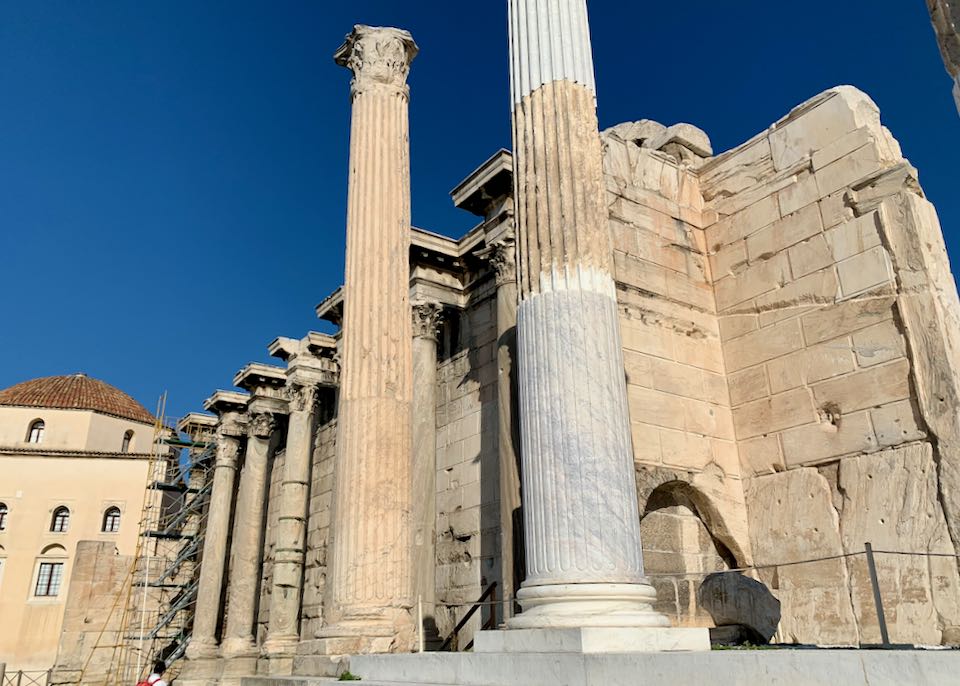
The building dates back to 132 AD, and was built by the Roman emperor Hadrian.
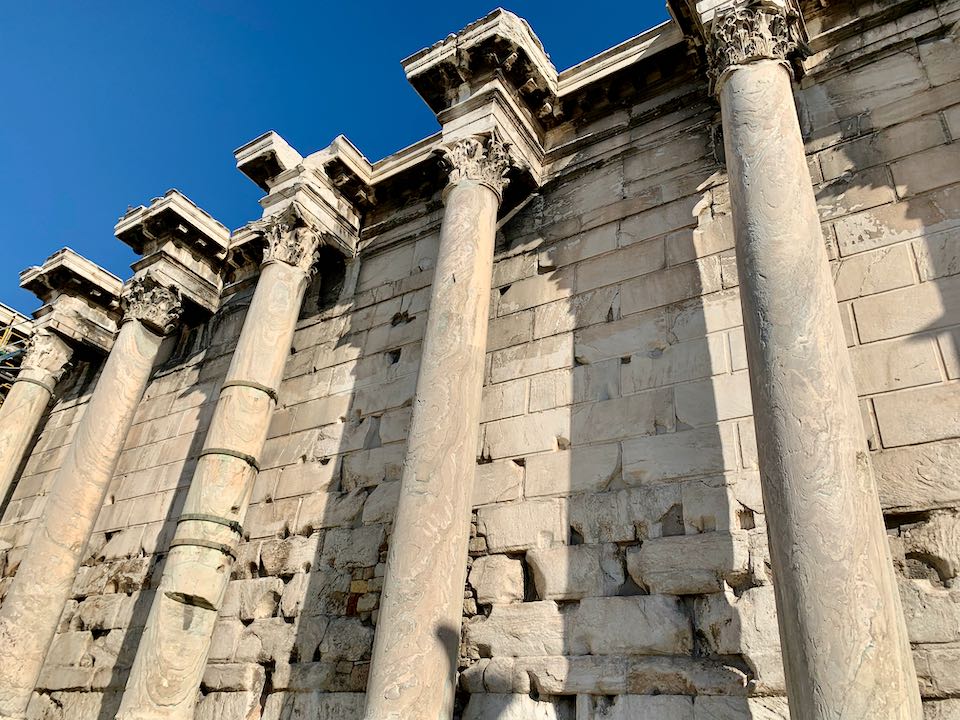
The site’s most recognizable feature is its entrance, featuring this row of Corinthian columns that line the reconstructed western wall.
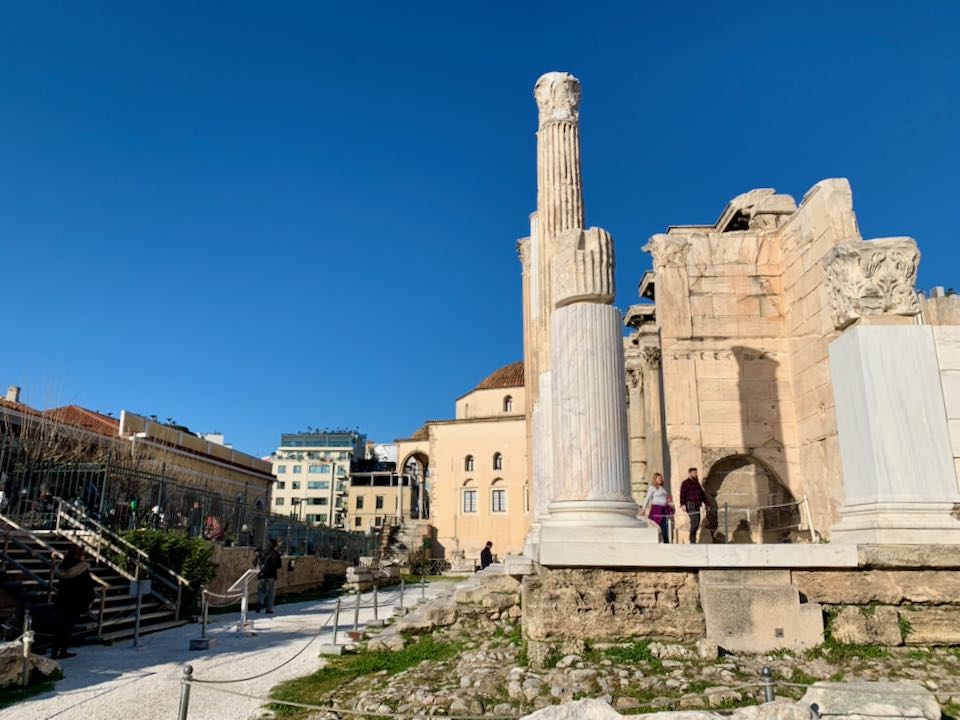
The entrance is well-visible from the street, but visitors to the site can venture beyond the columns to the heart of the site.
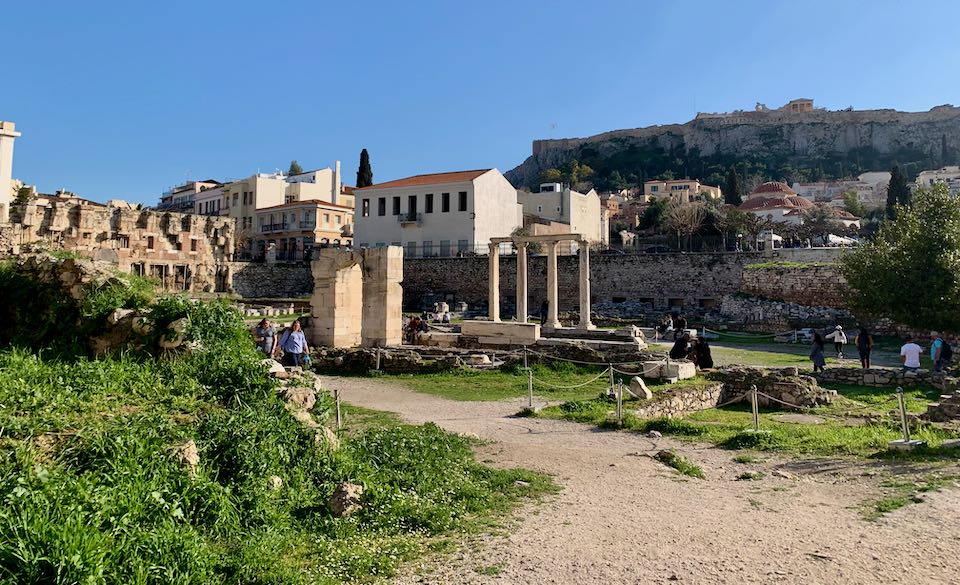
Set at the foot of the Acropolis, the ancient building was a sort of civic center that included not only a library, but also music and lecture auditoriums.
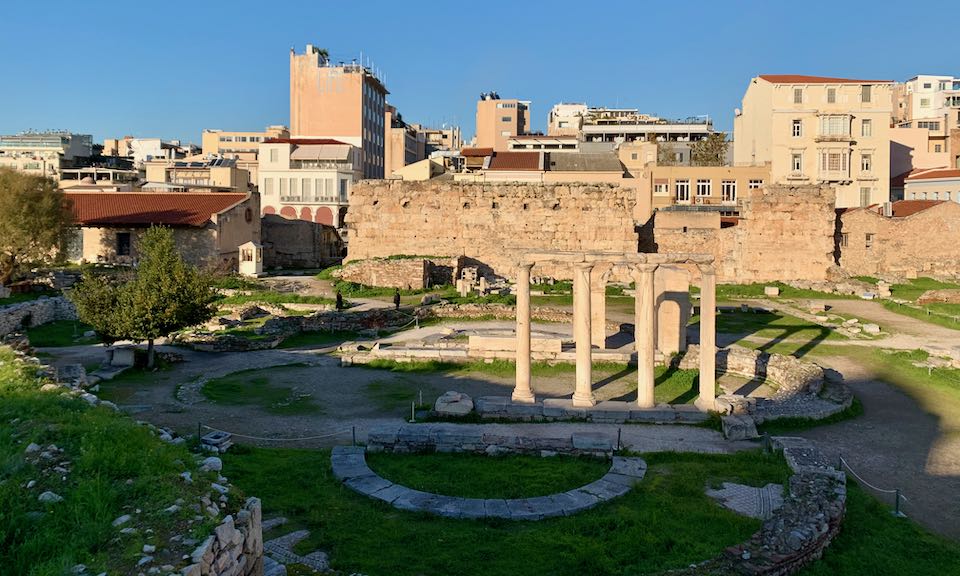
The site also includes the ruins of two early churches. The most prominent of the two is the tetraconch (quatrefoil-style) church of Megali Panagia in the site’s center courtyard. It was first constructed in the 5th century, demolished and rebuilt in the 7th century, and then again in the 11th. It is believed to be the oldest Christian church in Athens.
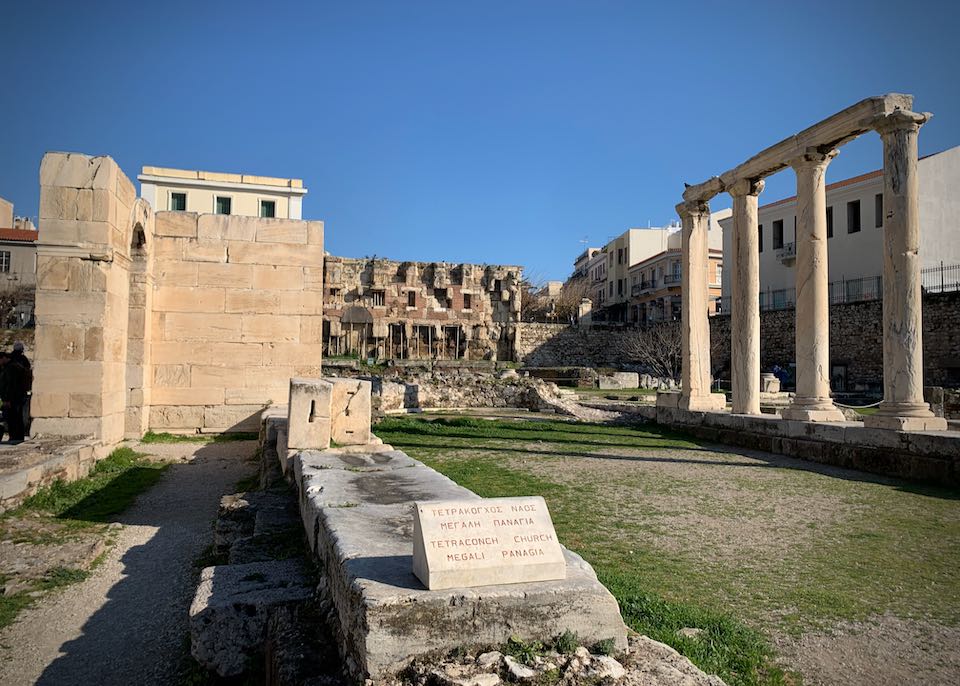
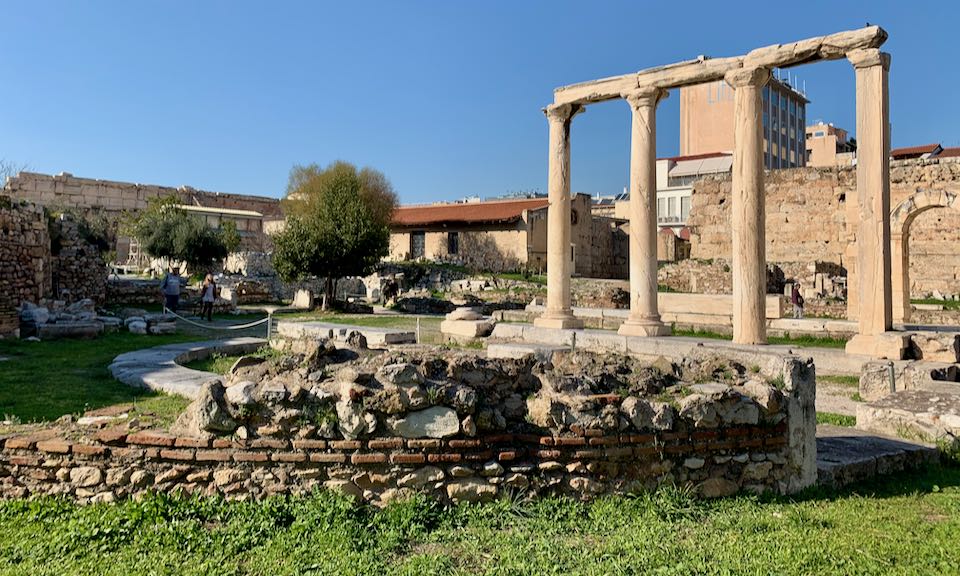
Various views of the church of Megali Panagia.
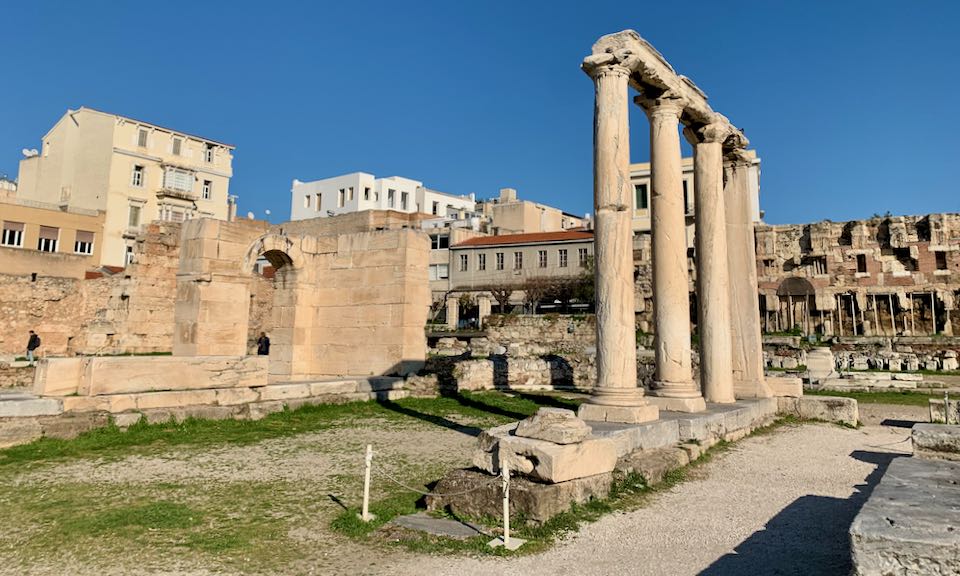
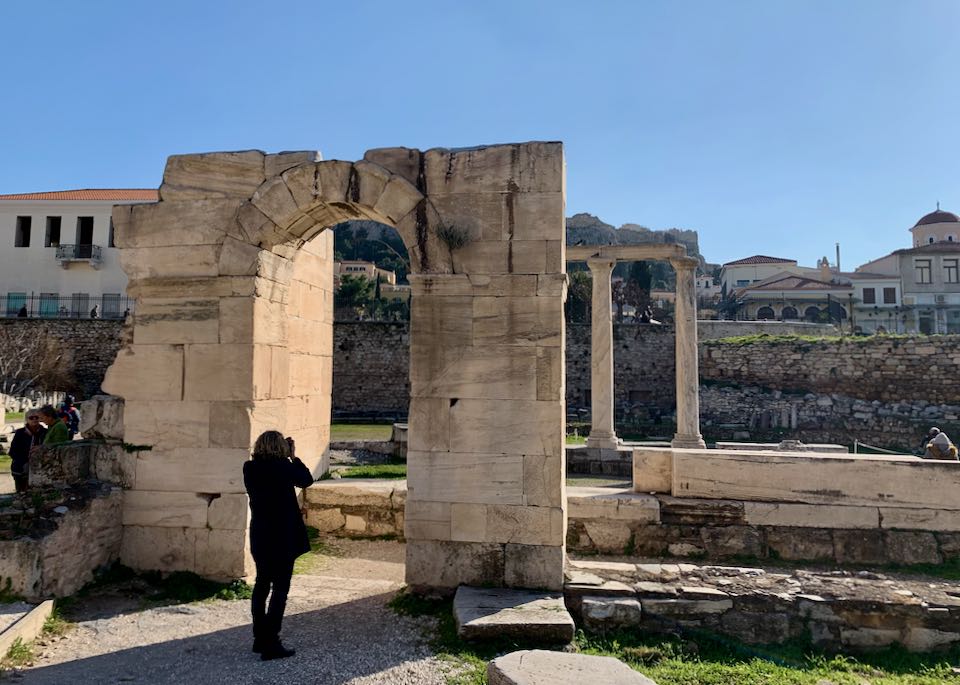
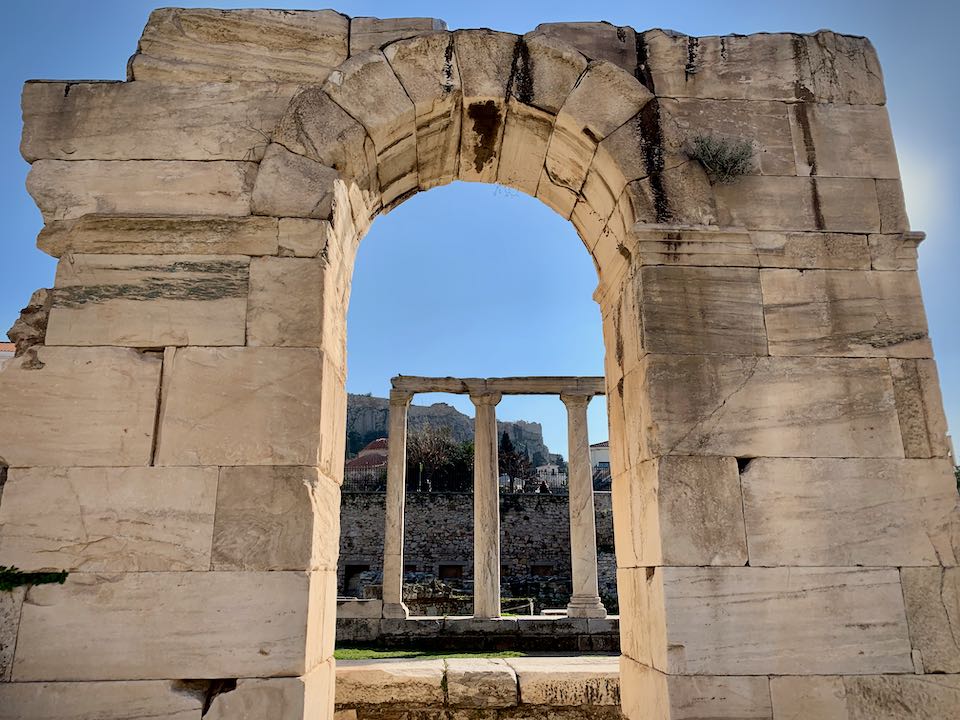
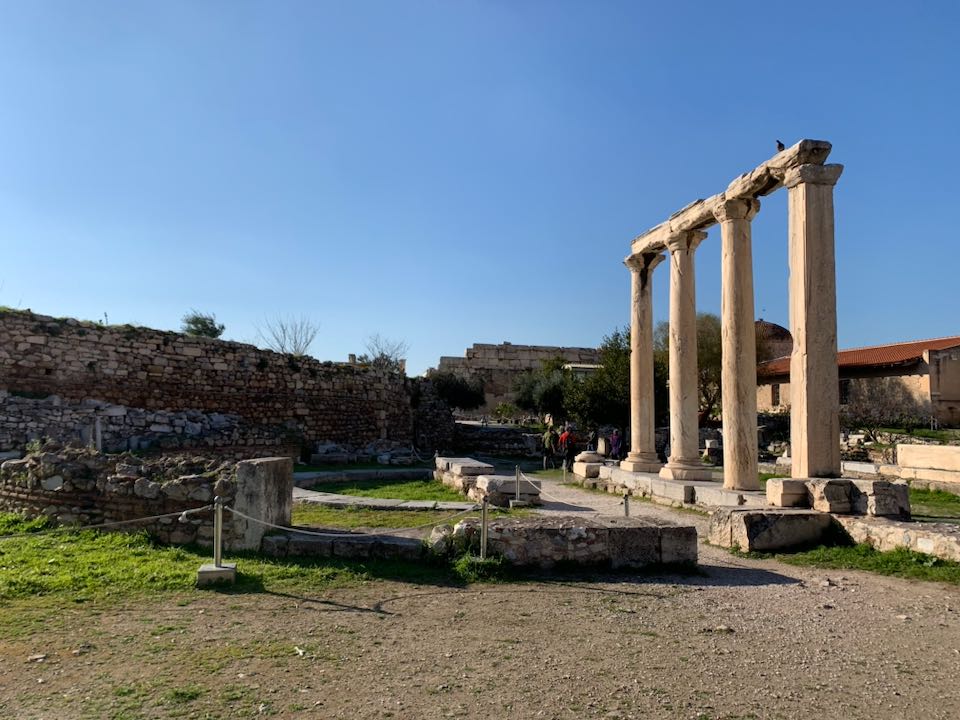
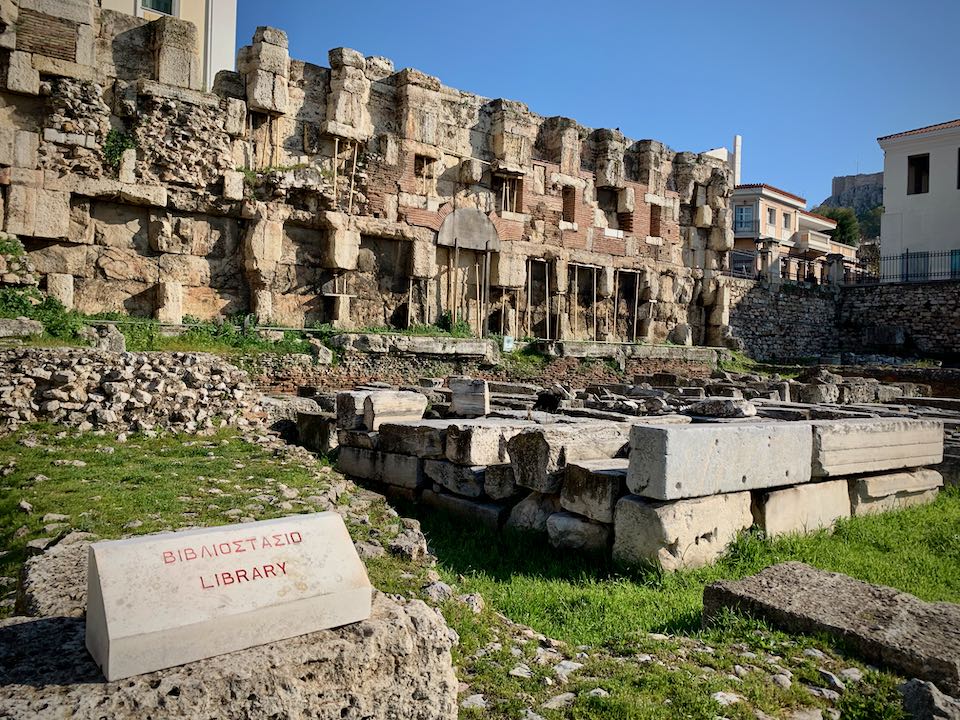
Ruins of the ancient library line the northern wall of the site.

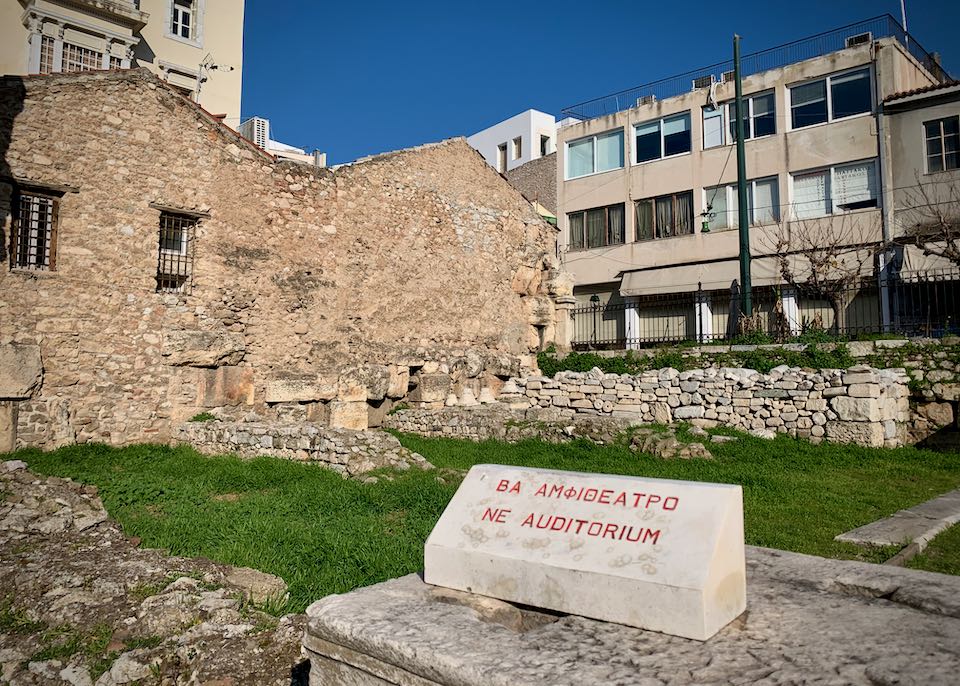
There are also the foundational remains of two auditoriums on site.
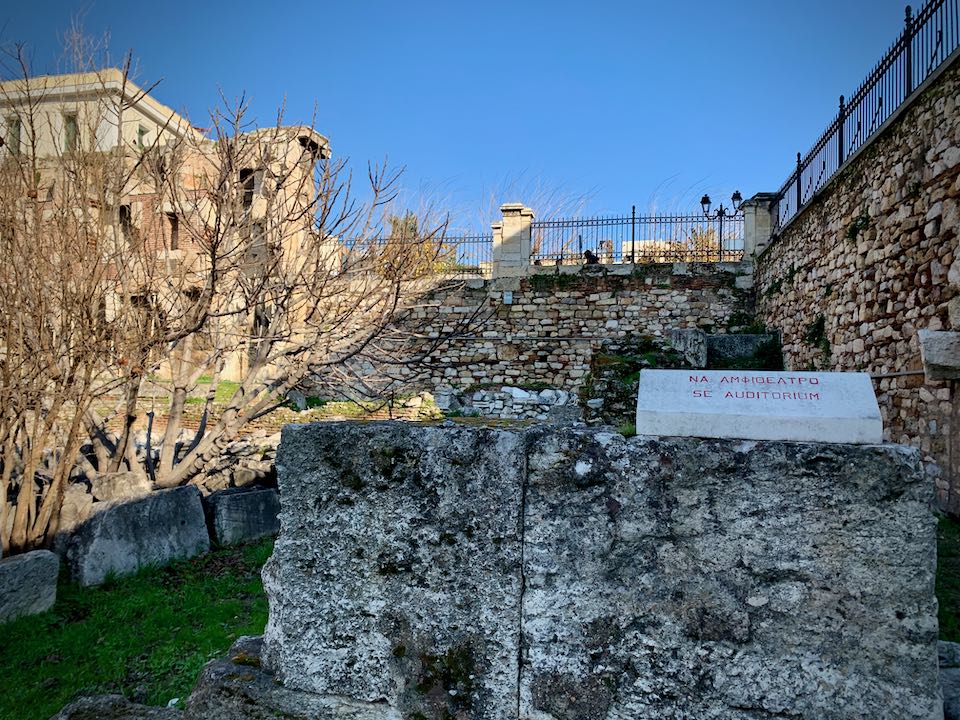
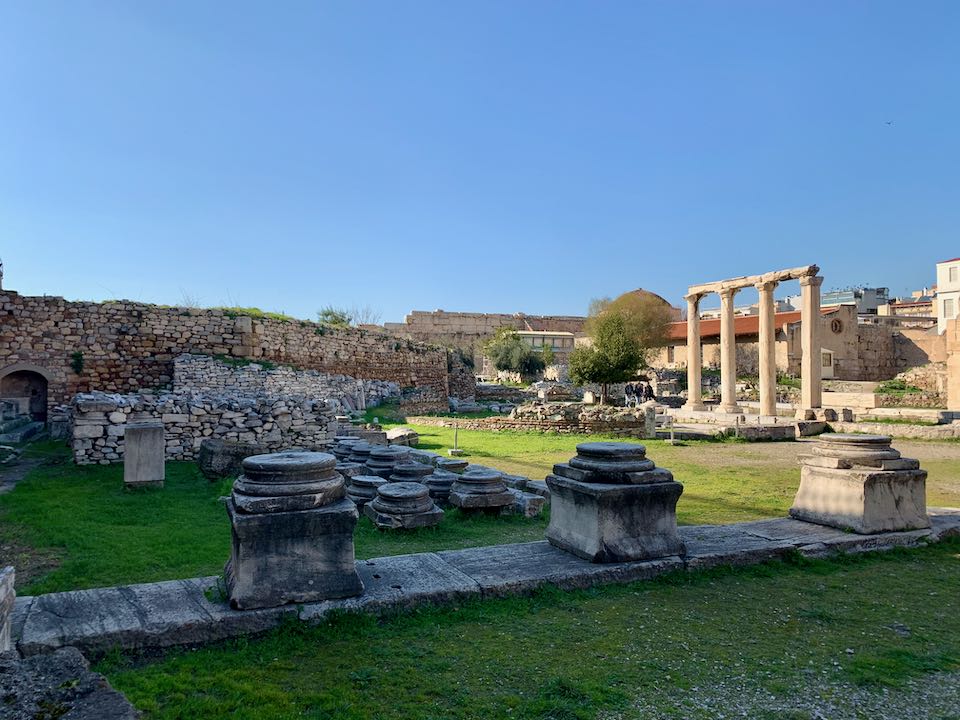
Views of the site.
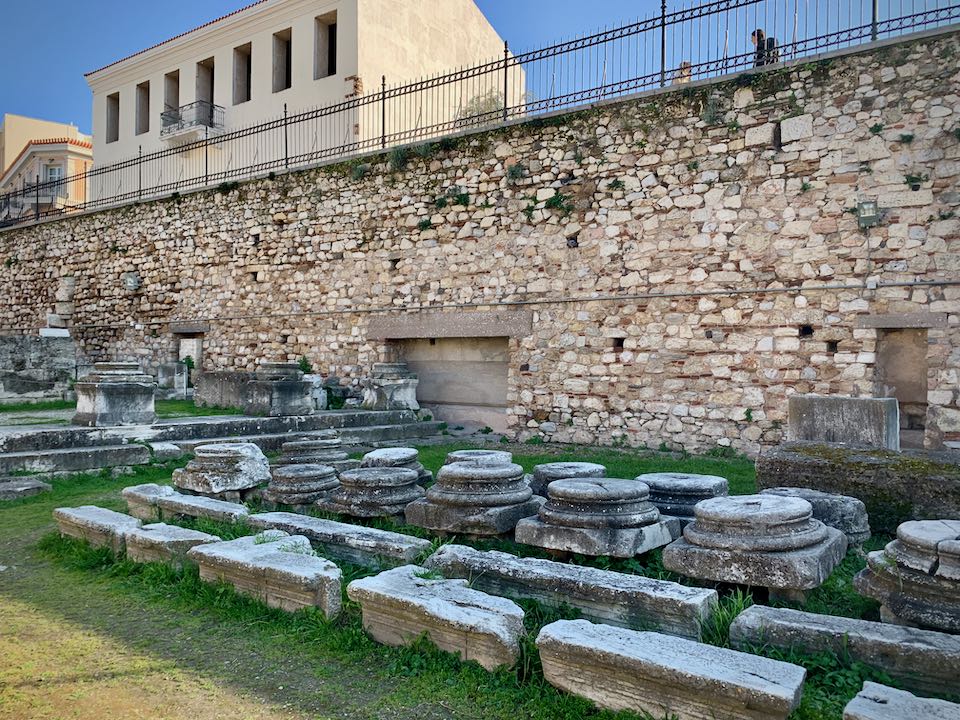
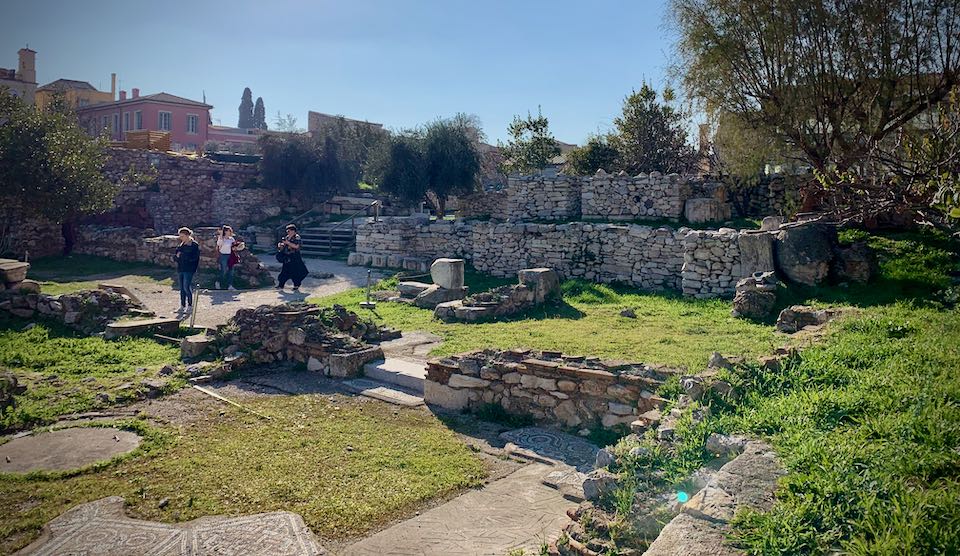
Sections of mosaic tile flooring can be seen throughout the site.
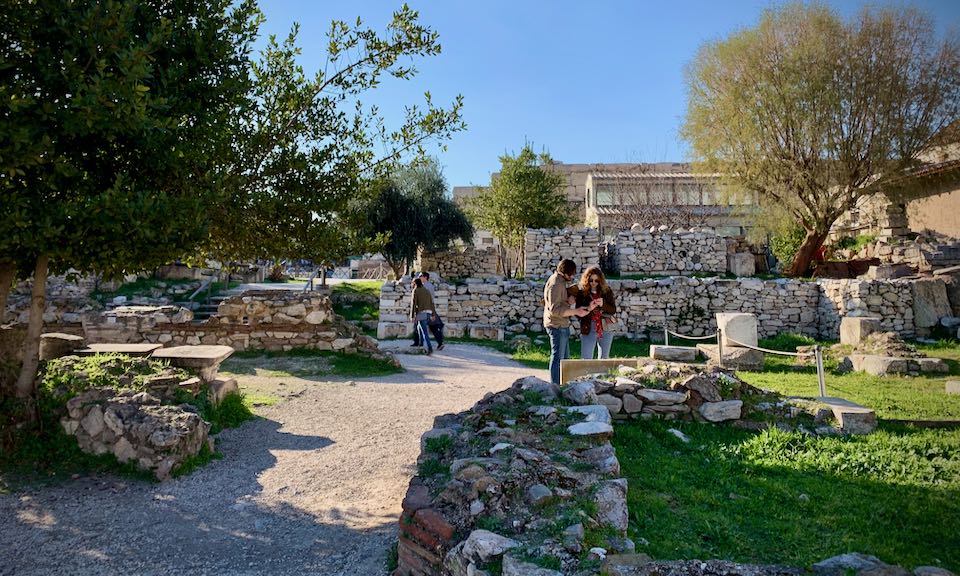
Signs at the site are in Greek and English, but are short on information. If you want to have a good understanding of the site’s history, it’s best to do a bit of research before you go.
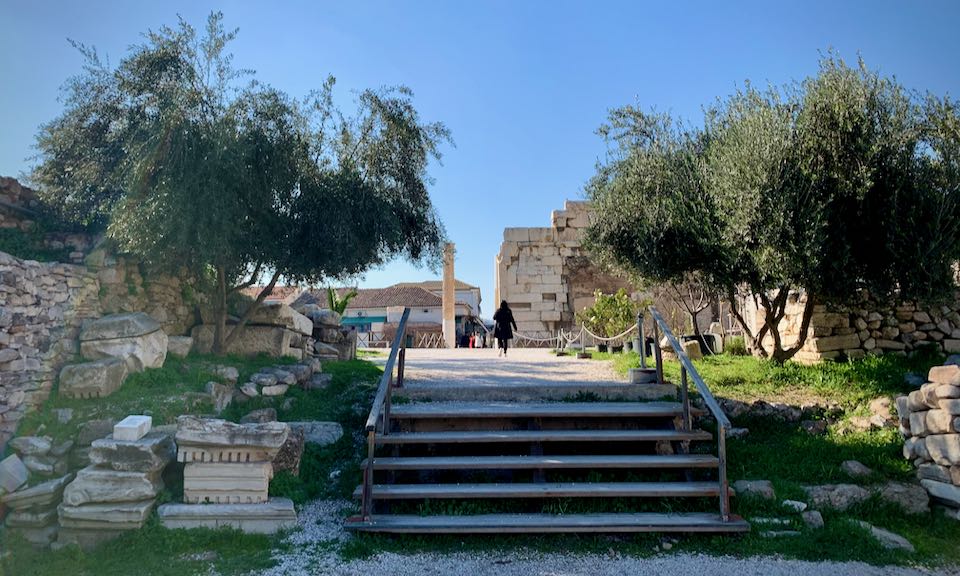
From the heart of the site, stairs lead upward to the entrance colonnade.
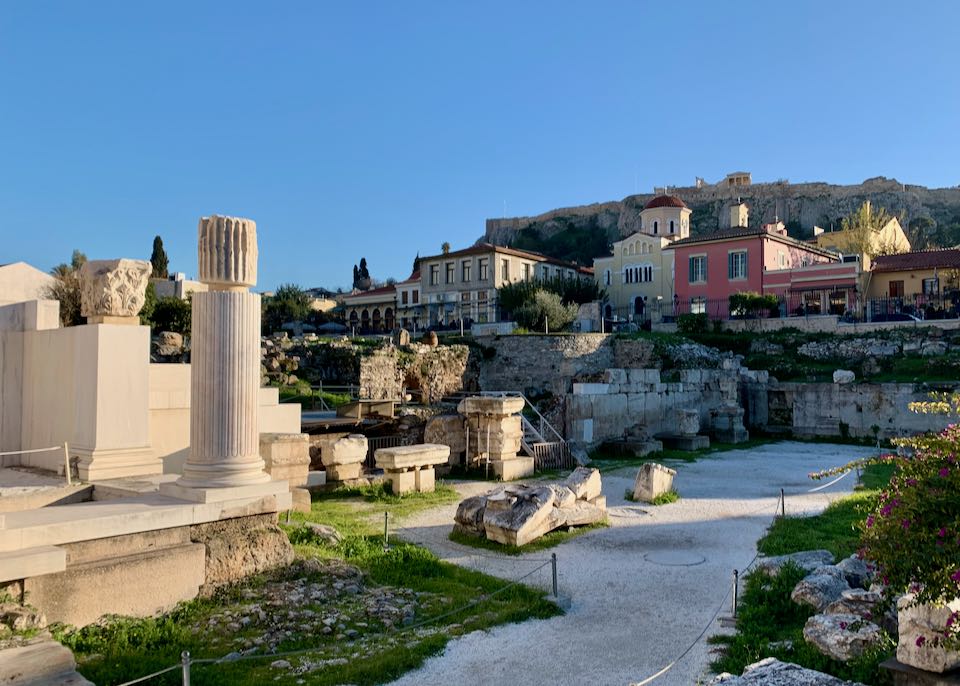
View of the Acropolis from the site entrance.
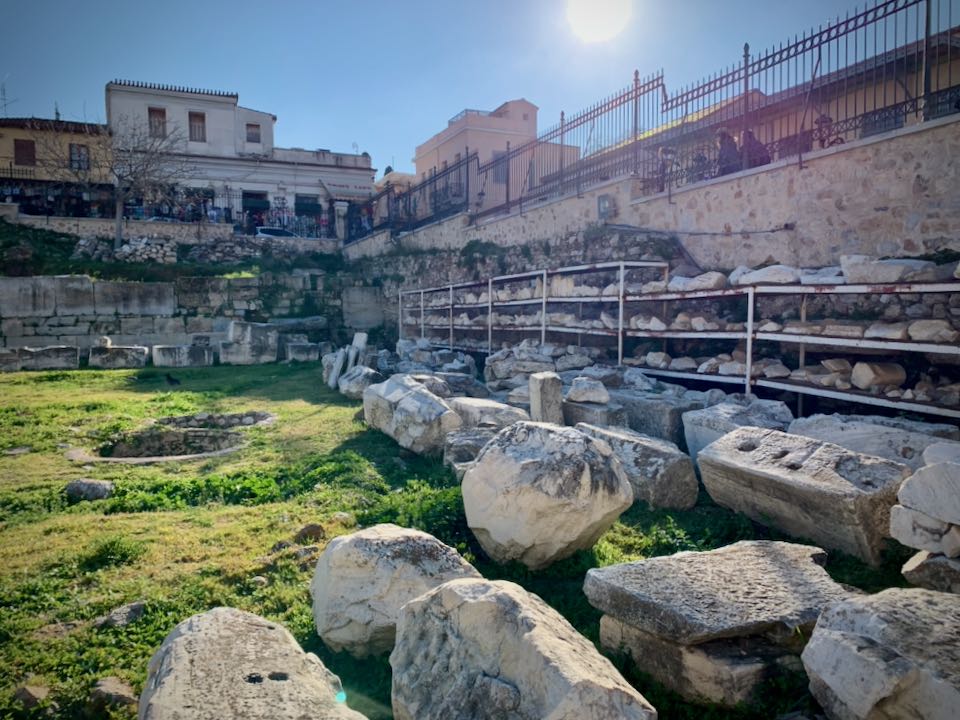
Pieces of unidentified ruin from the site are stored along the edges.
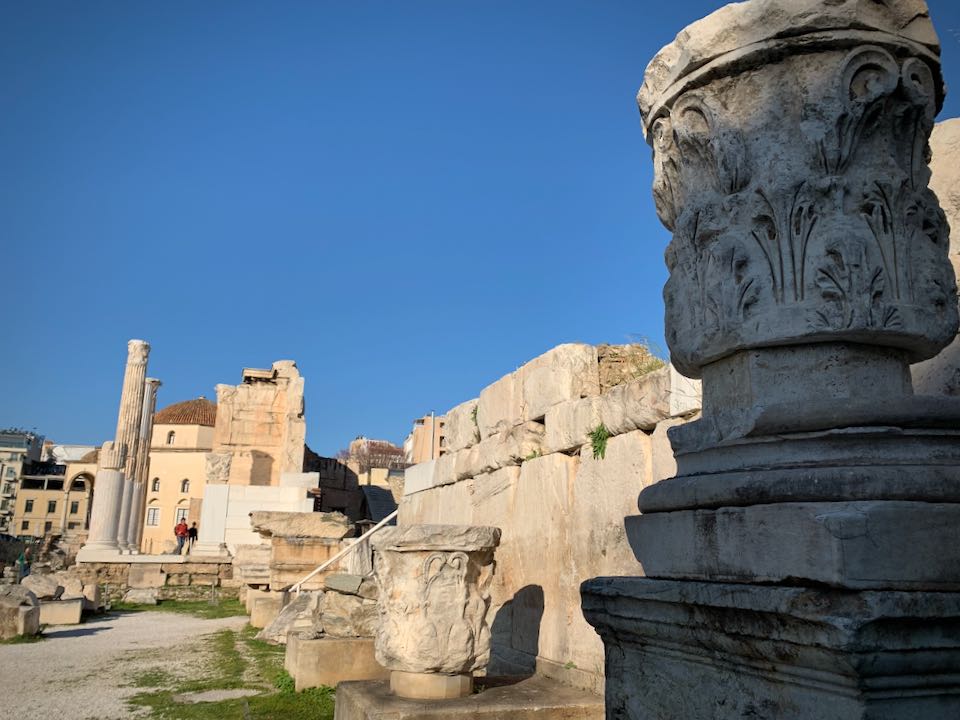
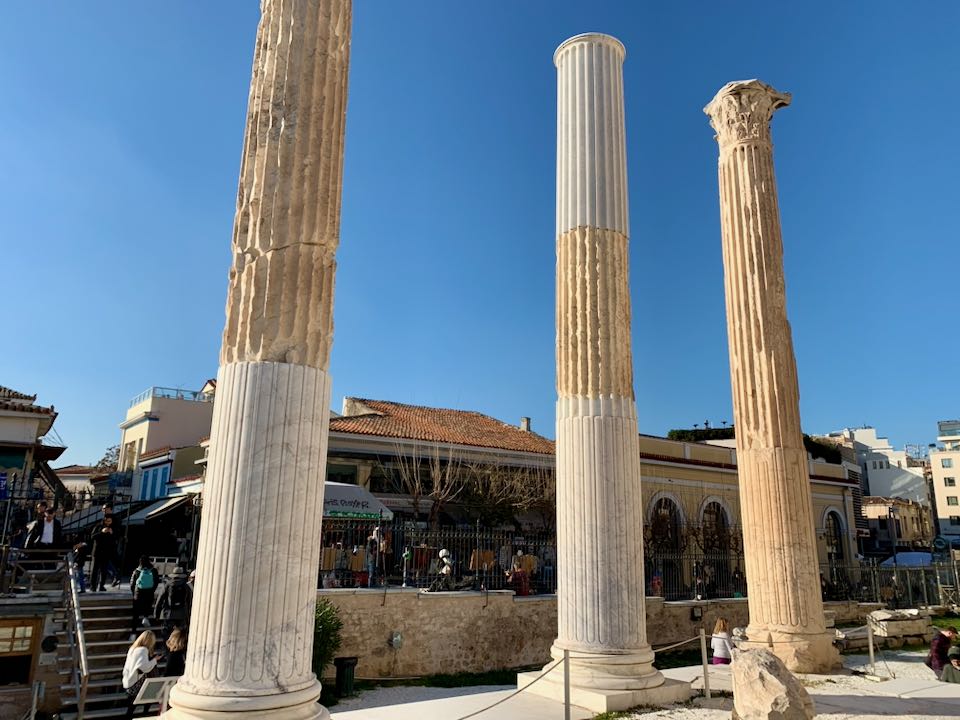
Read More
About Santorini Dave